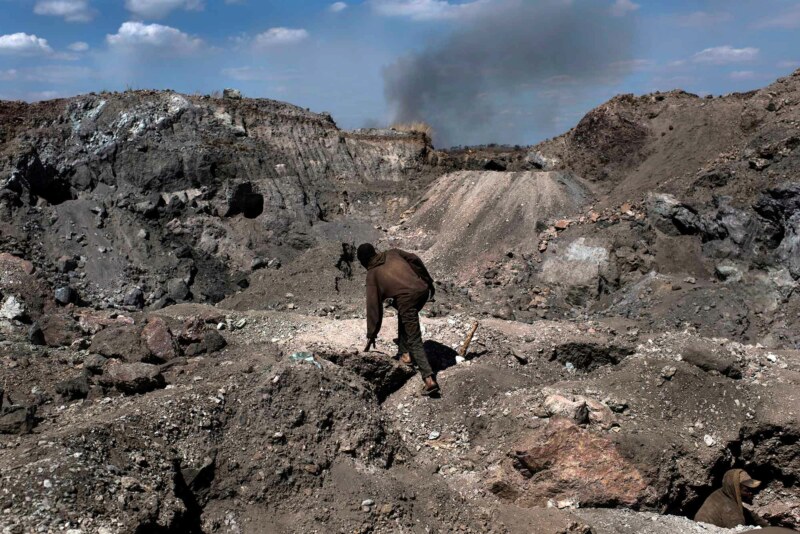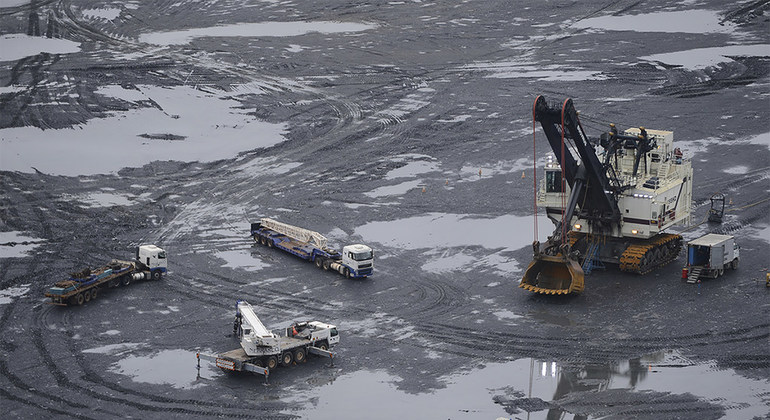Global consumption of lithium is growing strongly to meet the demand for batteries for electric vehicles (EVs). Mining companies have been rushing to open new lithium mines, to such an extent that there was a large overproduction in lithium in 2018. But current mining practices result in severe environmental damage from lithium batteries.
Since early 2021, opposition to Rio Tinto’s planned lithium mine in the western Jadar valley in Serbia has been growing. A petition that gained hundreds of thousands of signatures was followed by mass protests in Belgrade and many other parts of Serbia.
Responding to the protests, in December 2021 the local government for the area suspended the authorization for the mine – a significant victory for the protesters.
The protesters were concerned about lasting ecological damage to rivers and farmland, as well as the impact of the mining on local archaeological sites.
There have also been protests against lithium mining in several other countries:
- In Spain, where plans by Australian company Infinity Lithium for a mine in Cáceres lacked the necessary permits, and area to be mined is near a UNESCO World Heritage Site.
- In Portugal, where protests forced the cancellation of a major project in the Montalegre region in the north of the country. Local activists were concerned that mining and processing facilities would ravage the countryside, damage sources of water and make farming impossible.
- Also in Portugal, protests are continuing against another huge lithium project in Covas do Barroso, which would create huge mine dumps and change the course of local rivers.
- In Nevada in the United States, where a mine is proposed on land that is sacred to the Shoshone-Paiute people.
- In Argentina where protesters fear irreversible impacts on the quality and quantity of water.
Environmental impact of lithium mining
Conventional lithium mining and extraction is invariably damaging to the environment. The process for extraction of lithium requires large quantities of energy and/or water. Much of the world’s lithium resources lie in the very dry “Lithium Triangle” in South America, which covers parts of Argentina, Bolivia and Chile. Mining of lithium in this area is done by evaporating vast quantities of brine, and has had a devastating impact on agriculture and livelihoods.
Lithium batteries also require significant quantities of another mineral, cobalt. There are two important characteristics of cobalt mining. The first is that most of the cobalt in the world is situated in the Democratic Republic of the Congo (DRC). Nine of the world’s largest ten cobalt mines are in the DRC. The second characteristic is the toxicity of cobalt, and the frequent presence of other dangerous metals such as uranium in cobalt mines.

Health problems from cobalt mining
The mining companies in the DRC take full advantage of the poverty of the country’s residents and the relatively weak trade unions, paying low wages and imposing harsh conditions. But conditions for miners in conventional mines are far better than those for informal “artisanal” miners, who produce about 30 % of DRC’s cobalt. Child labor, horrendous working conditions health problems related to the cobalt mining artisanal sector are rife.
The world’s problematic lithium and cobalt mining are bound to continue. Consumption of lithium is rising steadily, and a few years ago was predicted to triple by 2025.
The growth of the EV market is one of the foundations of the “net zero” promises made by many world leaders. The EU wants to end the production of internal combustion passenger vehicles after 2035 (although there is opposition from Italy and France).
Many climate activists and scientists, and probably most socialists, believe that the transition to green transport should be based on public transport, powered by the electric grid. Indeed, much of society’s transport needs could be met by public transport.
The costs of constructing effective public transport systems that could underpin a change from private to public transport would be huge. Although cost alone should not be a barrier to ending greenhouse gas emissions, the magnitude of the infrastructure needed means that it would take several decades.
In the meantime, EVs will inevitably be the ecological alternative to internal combustion passenger vehicles.
Climate mitigation and justice
Does this mean that there is a conflict between climate change mitigation and ensuring justice for communities affected by lithium and cadmium mining? Will reduction of greenhouse gases in wealthy countries inevitably harm people in all areas affected by mining?
Armando Pinto, coordinator of the Montalegre com Vida protest movement which stopped a lithium development in northern Portugal, is reported to have said “Green mining doesn’t exist. Politicians need to stop trying to get rid of pollution in cities by polluting our villages instead.”
Mining does indeed have a large impact on the environment, whether from the use of large quantities of water, contamination of groundwater or the creation of large waste dumps.

One of the most hazardous impacts of mining on the environment has been the failure of “tailings” dams. These are dams in which liquid or semi-liquid waste from processing the rocks and minerals is stored, often with no plans for rehabilitation. Apart from the catastrophic failure of these dams, the toxic material often dumped in the dams poses a continuing risk to the environment.
However, in the next ten years or so, there will be few alternatives to lithium batteries for EVs, and even alternatives that may be developed will required minerals that will have to be mined.
Given the environmental impact of mining, how can justice for affected people and ecological protection be reconciled with reducing carbon emissions?
- An immediate step is to require all new mining activities to include a comprehensive decommissioning plan, so that when the minerals are exhausted, the environment will be restored as far as possible to its original state. The cost of decommissioning will then have to be included in the overall costing of the mine.
- Contamination of the environment by mine water effluent can be prevented by the effective treatment of the water, with the safe disposal of much reduced quantities of concentrated brine.
- Consumption of very large quantities of water can also be eliminated by the use of available technology to extract minerals from the water, which can then be safely returned to the environment.
- Existing tailings dams can be made safe. The need for responsible management of tailings is well known across the global mining sector, with several techniques available for comprehensive treatment and restoration, including “ecological restoration”.
All these measures are costly, and will not be undertaken voluntarily by mining companies. They will also mean that some proposed mines are nonviable.
Under a socialist system, in which people’s needs are prioritized, environmental protection would be automatically included in mining planning and operation. For now, with market economies, these environmental measures must be seen as one of the costs of switching from internal combustion to electric vehicles. A just transition must include safe and well paid mining jobs, and full protection for local communities and their environments. This is a basis for alliances and campaigns between the labor and climate movements.


